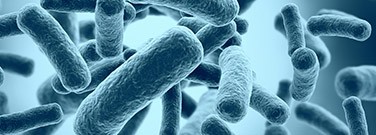Complex Development Patterns Found in Simple Biofilms

By Mark Miller
Research from the University of California San Diego reveals that simple bacterial communities called biofilms may be more advanced than first believed. ScienceDaily reports that Gürol Süel, a biological sciences professor at UC San Diego, and researchers from Stanford University and the Universitat Pompeu Fabra in Spain, have found that biofilms can be organized in complex patterns.
Biofilms are found throughout the world, from kitchen counters and boat hulls to the surface of your teeth. These basic clusters of bacteria produce a substance that helps them adhere to living and non-living surfaces. They were long thought unable to develop in complex, regulated patterns like the multicellular structures found in plants and animals.
"From a biological perspective our results suggest that the concept of cell patterning during development is far more ancient than previously thought,” said Süel. “Apparently, the ability of cells to segment themselves in space and time did not just emerge with plants and vertebrates but may go back over a billion years."
According to a report in ScienceAlert, the research showed that biofilms grown in labs can demonstrate patterns of concentric rings or waves, much like those in tree rings or developing embryos. In multicellular organisms, this type of patterning is known as segmentation and is part of tissue and complex body form development.
The rod-shaped bacterium Bacillus subtilis — typically found in soil, humans, and biofilms — was used in the research. The team deprived the bacterium of nitrogen to help create a stressful growth environment. As the biofilm consumed nutrients and grew, a "wave" of nutrient depletion moved across the cells to create an elaborate pattern of repeating segments.
Because biofilms are so pervasive, implications of the research could be far reaching. Their commonplace nature creates investigative and developmental opportunities in fields as diverse as medicine, the food industry, and beyond.
The discovery is certainly important for developmental biology. According to ScienceDaily, Süel sees bacteria as a new way to study developmental patterns. "Having a bacterial system allows us to provide some answers that are difficult to obtain in vertebrate and plant systems because bacteria offer more experimentally accessible systems that could provide new insights for the field of development."

